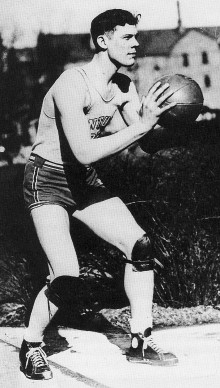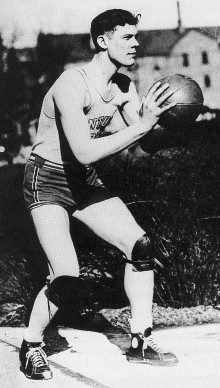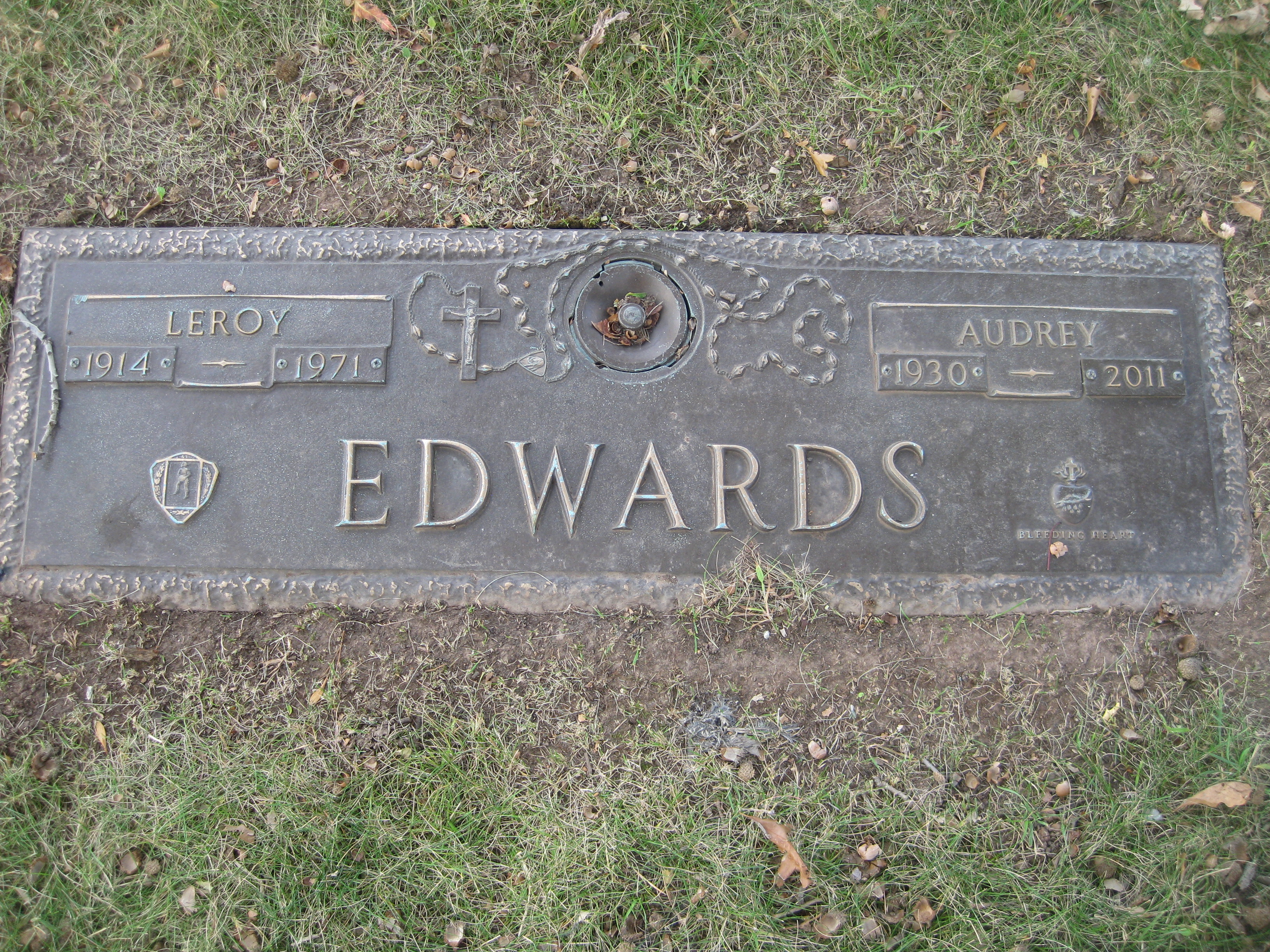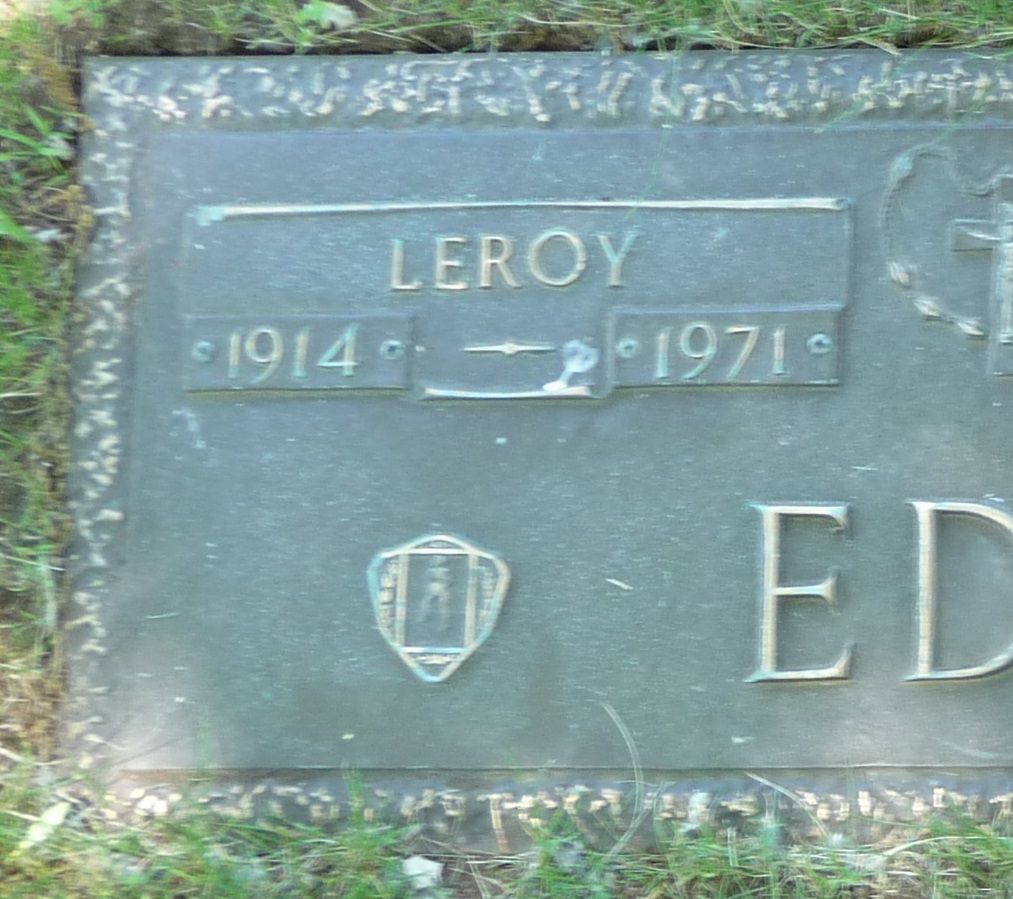A bruising player at 6-foot-5 (which for the 1930's was still quite tall) Edwards held an advantage over his competitors in that he was agile and very strong. He was very efficient in the post, where he possessed a deadly hook shot with either hand and was an adept passer.
Edwards attended Arsenal Tech High School in Indianapolis, IN before attending the University of Kentucky where he played one season of varsity his sophomore year (after breaking all the Kentucky freshman records while on the freshman team.) That season at UK Edwards was sufficiently dominant that he was named the collegiate player of the year and was later named as one of the top-10 best players in the decade of the 1930's in college basketball. His college coach, Adolph Rupp has noted that Edwards was one of the greatest players he ever coached.
When he left school after that sophomore year, he was entering a world where organized professional basketball was still in its formative years. There was no NBA in those days, but there were industrial leagues throughout the Midwest, which were its forerunners.
In the pro ranks, Edwards was a dominant player who helped lead his team, the Oshkosh All-Stars, to a number of championships and competing in championship games, both inside the National Basketball League (NBL) and out. He was the leading scorer in the NBL for three consecutive years, was a six-time first team all-league and was one of the top draws at the gate.
Edwards retired from basketball just around the time the various leagues and teams were starting to take shape to form the National Basketball Association (NBA). Although he faced off against many of the stars of the day, including such players as George Mikan who would be instrumental in the NBA's development, Edwards never played in the league. The All-Stars also never made it, as they folded at the time Edwards retired.
Edwards died young in 1971 at the age of 57 of a heart attack. He had been named to the Helms Foundation Basketball Hall of Fame a little over a week before his death and was posthumously inducted into the Indiana Basketball Hall of Fame. While there has been interest in the past as people have discovered the legacy of "Cowboy" Edwards, induction into the Basketball Hall of Fame in Springfield Massachusetts has proven elusive. His application has lay dormant for many years, held by the 'Old-Timers Committee.'
A bruising player at 6-foot-5 (which for the 1930's was still quite tall) Edwards held an advantage over his competitors in that he was agile and very strong. He was very efficient in the post, where he possessed a deadly hook shot with either hand and was an adept passer.
Edwards attended Arsenal Tech High School in Indianapolis, IN before attending the University of Kentucky where he played one season of varsity his sophomore year (after breaking all the Kentucky freshman records while on the freshman team.) That season at UK Edwards was sufficiently dominant that he was named the collegiate player of the year and was later named as one of the top-10 best players in the decade of the 1930's in college basketball. His college coach, Adolph Rupp has noted that Edwards was one of the greatest players he ever coached.
When he left school after that sophomore year, he was entering a world where organized professional basketball was still in its formative years. There was no NBA in those days, but there were industrial leagues throughout the Midwest, which were its forerunners.
In the pro ranks, Edwards was a dominant player who helped lead his team, the Oshkosh All-Stars, to a number of championships and competing in championship games, both inside the National Basketball League (NBL) and out. He was the leading scorer in the NBL for three consecutive years, was a six-time first team all-league and was one of the top draws at the gate.
Edwards retired from basketball just around the time the various leagues and teams were starting to take shape to form the National Basketball Association (NBA). Although he faced off against many of the stars of the day, including such players as George Mikan who would be instrumental in the NBA's development, Edwards never played in the league. The All-Stars also never made it, as they folded at the time Edwards retired.
Edwards died young in 1971 at the age of 57 of a heart attack. He had been named to the Helms Foundation Basketball Hall of Fame a little over a week before his death and was posthumously inducted into the Indiana Basketball Hall of Fame. While there has been interest in the past as people have discovered the legacy of "Cowboy" Edwards, induction into the Basketball Hall of Fame in Springfield Massachusetts has proven elusive. His application has lay dormant for many years, held by the 'Old-Timers Committee.'
Family Members
Sponsored by Ancestry
Advertisement
Advertisement













